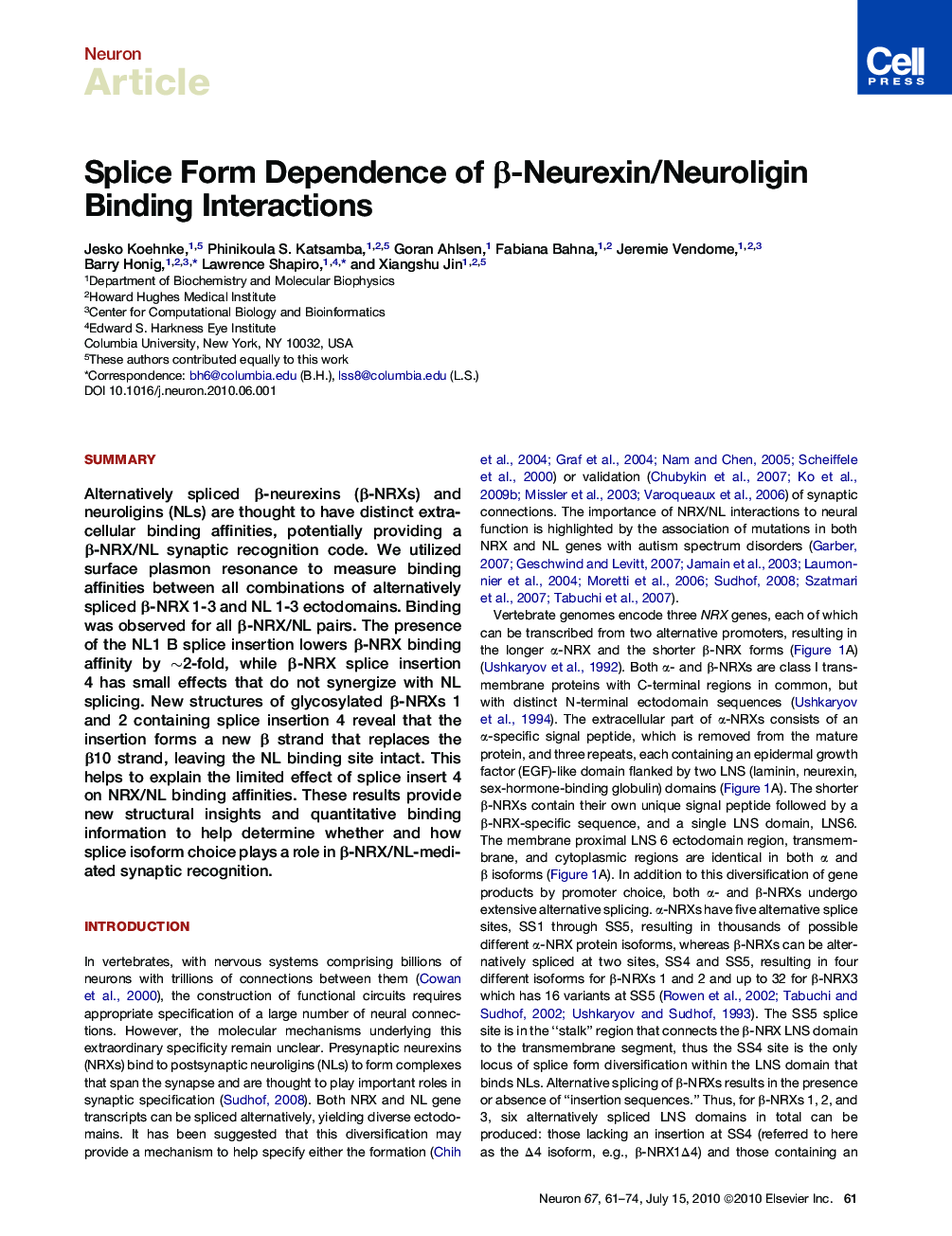| کد مقاله | کد نشریه | سال انتشار | مقاله انگلیسی | نسخه تمام متن |
|---|---|---|---|---|
| 4321876 | 1291659 | 2010 | 14 صفحه PDF | دانلود رایگان |

SummaryAlternatively spliced β-neurexins (β-NRXs) and neuroligins (NLs) are thought to have distinct extracellular binding affinities, potentially providing a β-NRX/NL synaptic recognition code. We utilized surface plasmon resonance to measure binding affinities between all combinations of alternatively spliced β-NRX 1-3 and NL 1-3 ectodomains. Binding was observed for all β-NRX/NL pairs. The presence of the NL1 B splice insertion lowers β-NRX binding affinity by ∼2-fold, while β-NRX splice insertion 4 has small effects that do not synergize with NL splicing. New structures of glycosylated β-NRXs 1 and 2 containing splice insertion 4 reveal that the insertion forms a new β strand that replaces the β10 strand, leaving the NL binding site intact. This helps to explain the limited effect of splice insert 4 on NRX/NL binding affinities. These results provide new structural insights and quantitative binding information to help determine whether and how splice isoform choice plays a role in β-NRX/NL-mediated synaptic recognition.
► Determine splice form dependence of NRX/NL affinity
► Structure of NRX containing insert 4 explains small effects on binding
► Affinity differences are small, not binary
► This argues against affinity regulation hypothesis
Journal: - Volume 67, Issue 1, 15 July 2010, Pages 61–74